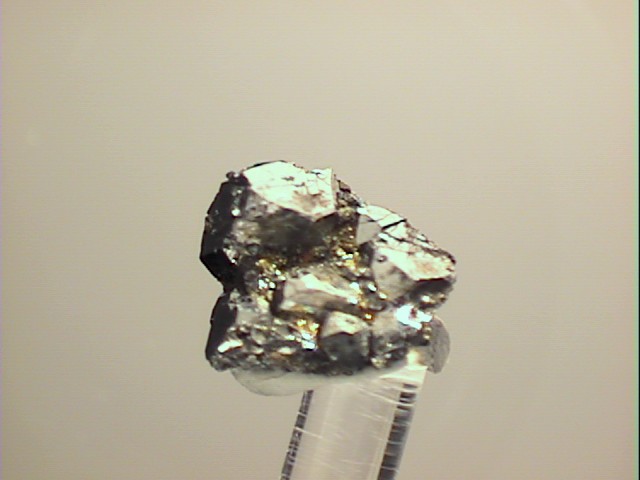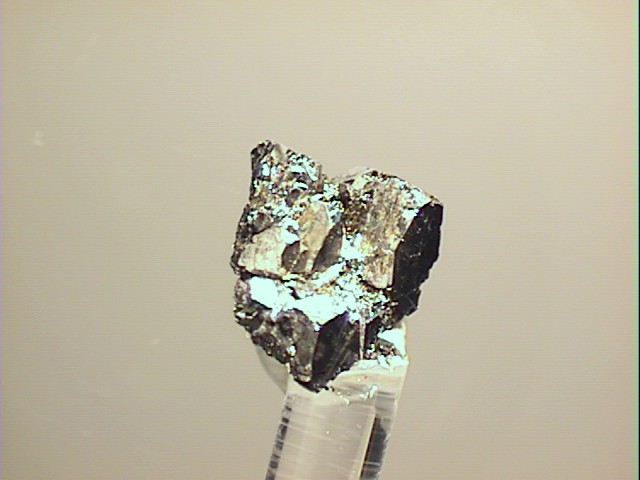 THE MINERAL SPERRYLITE
THE MINERAL SPERRYLITE
- Chemistry: PtAs2, Platinum Arsenide.
- Class: Sulfides
- Subclass: Arsenides
- Group: Pyrite
- Uses: Ore of platinum and as mineral specimens.
Specimens
Sperrylite is a cousin of the much more common and well known mineral, pyrite. Both belong to the Pyrite Group of minerals and share a similar structure and therefore similar crystal habits. They can not be mistaken for each other however since pyrite is brassy yellow and sperrylite is tin white in color.
Pyrite's and sperrylite's structure is analogous to galena's structure with a formula of PbS. Galena though has a higher symmetry. The difference between the two structures is that the single sulfur of galena is replaced by a pair of sulfurs in sperrylite. The sulfur pair are covalently bonded together in essentially an elemental bond. This pair disrupts the four fold symmetry that a single atom of sulfur would have preserved and thus gives sperrylite a lower symmetry than Galena.
PHYSICAL CHARACTERISTICS:
- Color is tin white.
- Luster is metallic.
- Transparency: Crystals are opaque.
- Crystal System is isometric; bar 3 2/m
- Crystal Habits include usually rounded crystals showing the cube, octahedron or pyritohedron (a dodecahedron with pentagonal faces). Crystals with combinations of these forms are more common. Also massive and reniform.
- Cleavage is very indistinct (cubic).
- Fracture is conchoidal.
- Hardness is 6 - 7
- Specific Gravity is approximately 10.6 (very heavy even for metallic minerals).
- Other Characteristics: Brittle, striations on cubic faces caused by crossing of pyritohedron with cube. (note - striations on cube faces also demonstrate sperrylite's lower symmetry).
- Associated Minerals are chalcopyrite, pyrrhotite and pentlandite.
- Notable Occurrences include Sudbury, Ontario, Canada and the Bushveld rocks of Transvaal, South Africa.
- Best Field Indicators are crystal habit, hardness, luster, associations, color and lack of good cleavage.



